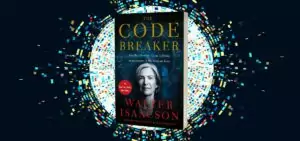By Nicky Charlish

✅ AI Essay Writer ✅ AI Detector ✅ Plagchecker ✅ Paraphraser
✅ Summarizer ✅ Citation Generator
What do faith and fashion have in common? At first glance, nothing. One is concerned with unchanging verities, the other with the surface, the passing, the ephemeral. But they share one thing. Both have beliefs and rituals which can be the subject of endless exegesis. Parables and peplums alike can be elucidated for their supposed symbolism. Religious commentators and controversialists mine sacred texts and practices for meaning or to score doctrinal points. Fashion styles can be used as imagined indicators of a public mood, or as clothes-horses upon which to hang, with varying degrees of accuracy, social or political observations. What enlightenment does this book provide for us about the attitudes of the eighties, a decade which, until recently, commentators have studiously ignored?
Iain R Webb, an award-winning writer, and professor of fashion at the Royal College of Art and Central St. Martin’s, is a former fashion editor of Blitz magazine, which was founded in 1980 and shared its name with a club which came to symbolize the then-current New Romantic movement (more of that later). It was one of a triumvirate of what was considered to be a unique invention of the period: the style magazine (the other two were i-D and The Face). This genre was not entirely new—women’s magazines ranging from Tatler to Photoplay had, for decades, provided style examples (based on the fashions favored by aristocratic women and, later, film stars) for their readers to follow. But in the wake of the Punk Rock and New Romantic movements, there had emerged the concept of ‘street style.’
Again, there was nothing essentially new here—teenage styles, based on the various genres of popular music and the clothes adopted by their young followers, had been a source of commercial interest and social/sartorial comment since the emergence of teenagers as a specific socio-economic group in the 1950s. Teddy Boy, Mod, Skinhead, whatever, the teen mags told their readers where to get the clothes, haircuts, make-up, and records of their chosen style tribe (pop music was important here: from the fifties to the eighties, it was taken as a serious form of youth bonding: generations of schoolchildren would write the names of their favorite bands onto schoolbags and exercise-book covers, although it must also be remembered that a number of their confreres had only a passing interest in pop and, if middle-class, were often dissuaded by parental disapproval from adopting what were seen as down-market tastes and dress-codes).
What made Blitz and its coeval publications catch media-watchers’ imaginations was the combination of flamboyance and hard work manifested by their New Romantic go-getting workforces, plus the feeling that the fashions they championed were harbingers of something new. This book contains an interview with Blitz’s founders along with a collection of its fashion shoots, each one being accompanied by recollections of its production background by those involved. There is also a selection of interviews with leading fashion figures of the period, along with a useful career update of the magazine’s contributors.
The founders’ interview shows the usual mixture of vision and bravura which accompanies any new media undertaking, whilst the fashion shoots feature clothes designed by and for people the cultural commentator Peter York has described as ‘Thems.’ Products of the post war expansion of art colleges and the rise in status of interior designers—who considered that they could revolutionize a Britain still clouded by post-war austerity—Thems were people who “…wear their rooms, eat their art.” Think Andrew Logan (of Alternative Miss World fame), and Gilbert and George, as examples of Themness. So the clothes we see here are not what you would wear for, say, doing the weekly shop or going to work (unless you were a Them, of course).
And what we see is very much a mixed bag. From Blitz of November 1984, we see a model swathed majestically in a crown of fabric by designer Judy Blame, exemplifying the make-do-and-mend ethos of some designers at that time. April 1986 shows a pseudo-Hermes colorful smart tailored women’s jacket made by Darryl Black from scarves by high street brand Pink Soda, whilst October 1986 gives us improvised ball gowns by Black, and August 1987 shows a hybrid combination of clothes styles by Michael Costiff and his late wife Gerlinde featuring a model wearing lycra shorts, and a lace skirt stomping on cans of Red Stripe beer (the clothes were from different parts of the world and their use can be seen as a harbinger of global branding). However, some of the material designed to catch our attention does so, but in the wrong way. One thing, probably not intended by Webb, stands out from examining what is on offer: the way in which fashion had, by the eighties, succumbed to what some might see as Modernism’s two defining principles; “sod the public,” and “will this go down well with my peers?”
If we want proof that the cutting edge is often too blunt to do the cultural job, some of the fashions here give abundant proof. From February 1985, we have pseudo-bloodstained bandaged bodies—which look bored rather than suffering—to illustrate a feature about the rise of plastic surgery, whilst from September 1986, we have an exercise in tired camp—a Spanish-themed feature including a corseted male with a rose between his teeth. Some of this work gives a sense of desperation—or the sound of the bottom of a barrel being scraped furiously—in an attempt to escape the hard truth that there is only so much that can be done with clothing to make it seem new, that fashion is, at base, an exercise in inventive visual recycling. Nevertheless, these shoots are valuable for the sense of pioneering enthusiasm, recollected by their participants, which helped to get not only the designers but also the whole style magazine genre off the ground.
Webb’s selection of interviews with various designers, offering insights into what makes them tick, and their views about the machinations of fashion and related topics, is more interesting. We encounter the pretentiousness which one might expect from fashion’s practitioners. Donna Karan, asked in Blitz’s May 1986 issue whether she had a favorite designer, stated that “I admire everyone’s achievements in this business … I appreciate the difficulties and I admire individual statements.” This diplomatic reply hovers perilously near the bathetic world-improving aspirations of a beauty-pageant contestant. But from others, there are some unexpectedly blunt and perceptive views of not only their personal approaches to fashion, but also what the rag trade shows about national attitudes to art and achievement. From January 1987, we learn that distinguished fashion writer, the late Anna Piaggi, had a simple love of dressing-up and, visually, doing her own thing, showing a great sense of liberation from the dictates of fashion. Asked about the importance of the way she mixed clothes, she replied “I have respect, but at the same time there has to be a good mixture. There has to be a touch of humour, to send up what one is wearing.”
In April 1987, Designer Antony Price berated the “English idea that design is something to laugh at—design is poofs with pencils and bits of fabric and you laugh. In England, you either get people who understand absolutely everything about design, and are the best on the face of the earth, or you get the most ignorant people. If you get ignorant British, you get really ignorant. The equivalent of ignorant English in Europe can at least speak four other languages.” Price could almost be that perceptive critic of British industrial decline, Coreli Barnett, delivering one of his scattergun-like critiques of its organizational failures. So could Price’s fellow-designer Jasper Conran.
Asked in April 1987 what he thinks of the British fashion industry, he replied that “I wish it would regard itself as a real fucking industry…. anyone can go out there and say “I’m a fashion designer,” and it’s not good for how we are perceived in general as a country, which is still as a nice little cottage knitwear industry because there is no base of manufacture.” One suspects that little has changed here and politicians, rather than hanging around fashion events in the forlorn hope of garnering some ‘street-cred,” could instead learn some hard lessons from designers about improving British attitudes to efficient production.
With this book, Webb joins other recent re-evaluators of the eighties’ fashion, music, and clubbing scenes, and we might wonder why this reassessment has taken so long to start. The clue is in the magazine’s title. In the late 1970s, London’s Blitz club was the epicenter of the New Romantic scene, a place where future leading figures in the arts and fashion worlds partied, posed, and networked (it closed a month after Blitz magazine was launched). Despite the club attracting people who would, for the next twenty years, be cultural achievers and trend-setters—such as film-makers John Maybury and Derek Jarman, fashion designers John Galan and Jasper Conran, writer Robert Elms, milliner Stephen Jones, Daniel James (future founder of influential Mute Records), and musicians such as Midge Ure (of synthesizer band Ultravox)—New Romanticism (which would eventually go mainstream) was viewed by contemporary commentators as superficial, apolitical, and out to make money: all bad things in the eyes of left-leaning journalists—especially those in the music press—who, forgetting that they were part of the capitalist press themselves, took a less than enthusiastic view of anything that appeared to chime with recently-elected Mrs. Thatcher’s socio-economic policies.
A fear of the fey could have been at work here, too: seventies’ glam rockers may have toyed with gay mannerisms, but with New Romantics the camping around was the real deal. Laddishness and Right-On puritanism concocted a heady brew of long-lasting disdain which was why, until recently, very little reconsideration of the New Romantic achievement had emerged. Now, some of its devotees are daring to put their heads above the cultural parapet and throw fresh light onto the achievements of the eighties—as well as offering a reproof to those who have unthinkingly dismissed the period. Webb’s book is not only a fairly comprehensive fashion resource but also a welcome addition to the reappraisal of a seminal period in British popular culture.
———-
Provided with a Creative Commons License, with a few edits: https://creativecommons.org/licenses/by/1.0/
Follow us on Reddit for more insights and updates.





Comments (0)
Welcome to A*Help comments!
We’re all about debate and discussion at A*Help.
We value the diverse opinions of users, so you may find points of view that you don’t agree with. And that’s cool. However, there are certain things we’re not OK with: attempts to manipulate our data in any way, for example, or the posting of discriminative, offensive, hateful, or disparaging material.